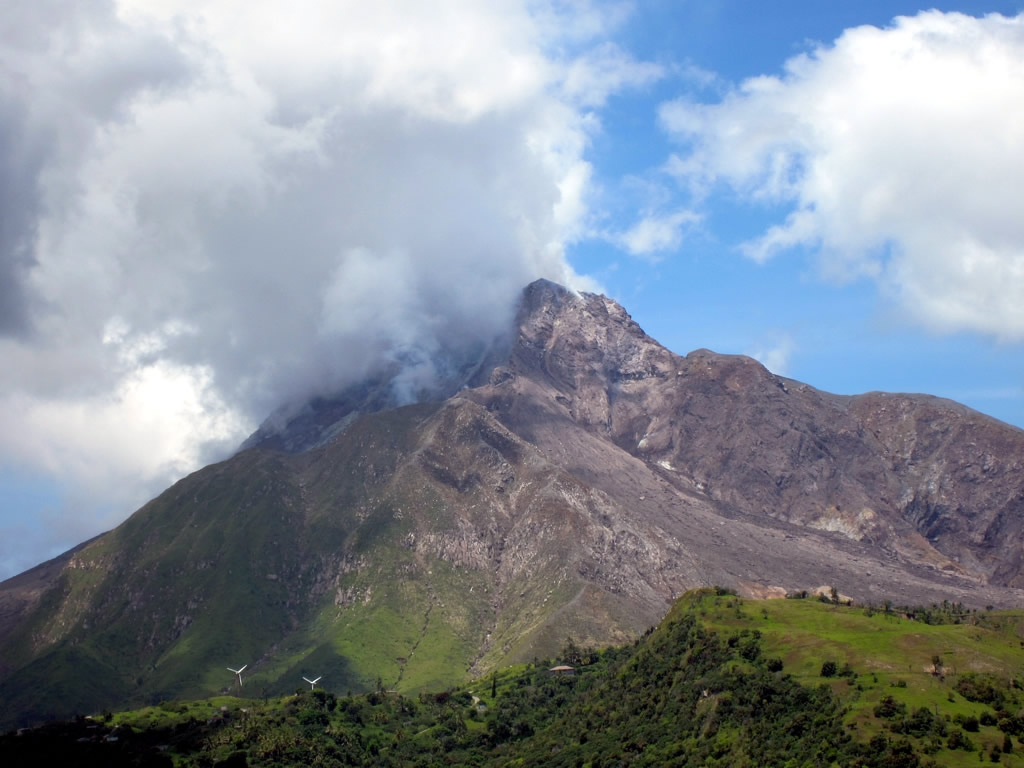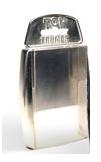|
Jenni Barclay
Jenni Barclay is a professor of volcanology at the University of East Anglia. She works on ways to mitigate volcanic risks, the interactions between rainfall and volcanic activity and the communication of volcanic hazards in the Caribbean. Barclay leads the NERC-ESRC funded ''Strengthening Resilience to Volcanic Hazards'' (STREVA) research project as well as a Leverhulme Trust programme looking at the volcanic history of the Ascension Islands. Early life and education Barclay became interested in the natural environment as a child, particularly volcanoes, tsunamis and avalanches. She enjoyed watching scientists from the Climatic Research Unit on BBC Horizon. Barclay studied geology at the University of Edinburgh. She moved to Bristol for her doctoral degree, and studied degassing processes in silicic volcanoes. During her postdoctoral fellowships she investigated magma storage in the Soufrière Hills volcano, an eruption which began on 18 July 1995. She identified that the Sou ... [...More Info...] [...Related Items...] OR: [Wikipedia] [Google] [Baidu] |
University Of Edinburgh
The University of Edinburgh ( sco, University o Edinburgh, gd, Oilthigh Dhùn Èideann; abbreviated as ''Edin.'' in post-nominals) is a public research university based in Edinburgh, Scotland. Granted a royal charter by King James VI in 1582 and officially opened in 1583, it is one of Scotland's four ancient universities and the sixth-oldest university in continuous operation in the English-speaking world. The university played an important role in Edinburgh becoming a chief intellectual centre during the Scottish Enlightenment and contributed to the city being nicknamed the " Athens of the North." Edinburgh is ranked among the top universities in the United Kingdom and the world. Edinburgh is a member of several associations of research-intensive universities, including the Coimbra Group, League of European Research Universities, Russell Group, Una Europa, and Universitas 21. In the fiscal year ending 31 July 2021, it had a total income of £1.176 billion, of ... [...More Info...] [...Related Items...] OR: [Wikipedia] [Google] [Baidu] |
Amphibole
Amphibole () is a group of inosilicate minerals, forming prism or needlelike crystals, composed of double chain tetrahedra, linked at the vertices and generally containing ions of iron and/or magnesium in their structures. Its IMA symbol is Amp. Amphiboles can be green, black, colorless, white, yellow, blue, or brown. The International Mineralogical Association currently classifies amphiboles as a mineral supergroup, within which are two groups and several subgroups. Mineralogy Amphiboles crystallize into two crystal systems, monoclinic and orthorhombic. In chemical composition and general characteristics they are similar to the pyroxenes. The chief differences from pyroxenes are that (i) amphiboles contain essential hydroxyl (OH) or halogen (F, Cl) and (ii) the basic structure is a double chain of tetrahedra (as opposed to the single chain structure of pyroxene). Most apparent, in hand specimens, is that amphiboles form oblique cleavage planes (at around 120 degrees), whe ... [...More Info...] [...Related Items...] OR: [Wikipedia] [Google] [Baidu] |
Pint Of Science
Pint of Science is an annual science festival that aims to communicate contemporary scientific developments to the public by bringing scientists to pubs, cafés and other public places to share their research and findings. It is mainly organised and run by volunteer postgraduate or postdoctoral researchers, lecturers and public engagement staff who are based at universities or research institutions. The festival takes place annually in the month of May and covers all aspects of research which are themed under the titles 'Beautiful Mind', 'Atoms to Galaxies', 'Our Body', 'Planet Earth', 'Tech Me Out', 'Our Society' and art-science events 'Creative Reactions'. During May 2019, thousands of researchers across 400 cities and 24 countries shared and discussed their findings with people. Due to the COVID-19 pandemic, the 2020 and part of the 2021 Pint of Science festival took place online. History Pint of Science has its roots in a 2012 initiative by a group of UK based postgraduate ... [...More Info...] [...Related Items...] OR: [Wikipedia] [Google] [Baidu] |
Top Trumps
''Top Trumps'' is a card game first published in 1978. Each card contains a list of numerical data, and the aim of the game is to compare these values to try to trump and win an opponent's card. A wide variety of different packs of ''Top Trumps'' has been published. Gameplay A pack of cards is based on a theme, such as cars, aircraft, books, boats, dinosaurs, or characters from a popular film or television series. Each card in the pack shows a list of numerical data about the item. For example, in a pack based on cars, each card shows a different model of car, and the stats and data may include its engine size, its weight, its length, and its top speed. If the theme is about a TV series or film, the cards include characters and the data varying from things like strength and bravery to fashion and looks, depending on the criteria. All the cards are dealt among the players. There must be at least two players, and at least one card for each player. The starting player (norma ... [...More Info...] [...Related Items...] OR: [Wikipedia] [Google] [Baidu] |
University Of The West Indies
The University of the West Indies (UWI), originally University College of the West Indies, is a public university system established to serve the higher education needs of the residents of 17 English-speaking countries and territories in the Caribbean: Anguilla, Antigua and Barbuda, The Bahamas, Barbados, Belize, Bermuda, British Virgin Islands, Cayman Islands, Dominica, Grenada, Guyana, Jamaica, Montserrat, Saint Kitts and Nevis, Saint Lucia, Saint Vincent and the Grenadines, Trinidad and Tobago, and Turks and Caicos Islands. Each country is either a member of the Commonwealth of Nations or a British Overseas Territory. The aim of the university is to help "unlock the potential for economic and cultural growth" in the West Indies, thus allowing improved regional autonomy. The university was originally instituted as an independent external college of the University of London. The university has produced students who have excelled in a number of disciplines such as the arts ... [...More Info...] [...Related Items...] OR: [Wikipedia] [Google] [Baidu] |
La Soufrière (volcano)
La Soufrière or Soufrière Saint Vincent () is an active stratovolcano on the Caribbean island of Saint Vincent in Saint Vincent and the Grenadines. It is the highest peak in Saint Vincent, and has had five recorded explosive eruptions since 1718. The latest eruptive activity began on 27 December 2020 with the slow extrusion of a dome of lava, and culminated in a series of explosive events between 9 and 22 April 2021. Geography and structure At , La Soufrière is the highest peak on Saint Vincent as well as the highest point in Saint Vincent and the Grenadines."La Soufrière" on Peakbagger.com Retrieved 1 October 2011 Soufrière is a stratovolcano with a and is the i ... [...More Info...] [...Related Items...] OR: [Wikipedia] [Google] [Baidu] |
Saint Vincent And The Grenadines
Saint Vincent and the Grenadines () is an island country in the Caribbean. It is located in the southeast Windward Islands of the Lesser Antilles, which lie in the West Indies at the southern end of the eastern border of the Caribbean Sea where the latter meets the Atlantic Ocean. Its territory consists of the main island of Saint Vincent and, south of that, two-thirds of the northern part of the Grenadines, a chain of 32 smaller islands. Some of the Grenadines are inhabited—Bequia, Mustique, Union Island, Canouan, Petit Saint Vincent, Palm Island, Mayreau, Young Island—while others are not: Tobago Cays, Baliceaux, Battowia, Quatre, Petite Mustique, Savan and Petit Nevis. Most of Saint Vincent and the Grenadines lies within the Hurricane Alley. To the north of Saint Vincent lies Saint Lucia, to the east is Barbados, and Grenada lies to the south. Saint Vincent and the Grenadines has a population density of over 300 inhabitants/km2 (700 per sq. mi.), with approxima ... [...More Info...] [...Related Items...] OR: [Wikipedia] [Google] [Baidu] |
Economic And Social Research Council
The Economic and Social Research Council (ESRC), formerly the Social Science Research Council (SSRC), is part of UK Research and Innovation (UKRI). UKRI is a non-departmental public body (NDPB) funded by the UK government. ESRC provides funding and support for research and training in the social sciences. It is the UK's largest organisation for funding research on economic and social issues. History The ESRC was founded in 1965 as the ''Social Science Research Council'' (SSRC - not to be confused with the Social Science Research Council in the United States). The establishment of a state funding body for the social sciences in the United Kingdom, had been under discussion since the Second World War; however, it was not until the 1964 election of Prime Minister Harold Wilson that the political climate for the creation of the SSRC became sufficiently favourable. The first chief executive of the SSRC was Michael Young (later Baron Young of Dartington). Subsequent holders of th ... [...More Info...] [...Related Items...] OR: [Wikipedia] [Google] [Baidu] |
Megapascal
The pascal (symbol: Pa) is the unit of pressure in the International System of Units (SI), and is also used to quantify internal pressure, stress, Young's modulus, and ultimate tensile strength. The unit, named after Blaise Pascal, is defined as one newton per square metre and is equivalent to 10 barye (Ba) in the CGS system. The unit of measurement called standard atmosphere (atm) is defined as 101,325 Pa. Common multiple units of the pascal are the hectopascal (1 hPa = 100 Pa), which is equal to one millibar, and the kilopascal (1 kPa = 1000 Pa), which is equal to one centibar. Meteorological observations typically report atmospheric pressure in hectopascals per the recommendation of the World Meteorological Organization, thus a standard atmosphere (atm) or typical sea-level air pressure is about 1013 hPa. Reports in the United States typically use inches of mercury or millibars (hectopascals). In Canada these reports are given in kilopascals. ... [...More Info...] [...Related Items...] OR: [Wikipedia] [Google] [Baidu] |
Ilmenite
Ilmenite is a titanium-iron oxide mineral with the idealized formula . It is a weakly magnetic black or steel-gray solid. Ilmenite is the most important ore of titanium and the main source of titanium dioxide, which is used in paints, printing inks, fabrics, plastics, paper, sunscreen, food and cosmetics. Structure and properties Ilmenite is a heavy (specific gravity 4.7), moderately hard (Mohs hardness 5.6 to 6), opaque black mineral with a submetallic luster. It is almost always massive, with thick tabular crystals being quite rare. It shows no discernible cleavage, breaking instead with a conchoidal to uneven fracture. Ilmenite crystallizes in the trigonal system with space group ''R''. The ilmenite crystal structure consists of an ordered derivative of the corundum structure; in corundum all cations are identical but in ilmenite Fe2+ and Ti4+ ions occupy alternating layers perpendicular to the trigonal c axis. Pure ilmenite is paramagnetic (showing only very weak attrac ... [...More Info...] [...Related Items...] OR: [Wikipedia] [Google] [Baidu] |
Magnetite
Magnetite is a mineral and one of the main iron ores, with the chemical formula Fe2+Fe3+2O4. It is one of the oxides of iron, and is ferrimagnetic; it is attracted to a magnet and can be magnetized to become a permanent magnet itself. With the exception of extremely rare native iron deposits, it is the most magnetic of all the naturally occurring minerals on Earth. Naturally magnetized pieces of magnetite, called lodestone, will attract small pieces of iron, which is how ancient peoples first discovered the property of magnetism. Magnetite is black or brownish-black with a metallic luster, has a Mohs hardness of 5–6 and leaves a black streak. Small grains of magnetite are very common in igneous and metamorphic rocks. The chemical IUPAC name is iron(II,III) oxide and the common chemical name is ''ferrous-ferric oxide''. Properties In addition to igneous rocks, magnetite also occurs in sedimentary rocks, including banded iron formations and in lake and marine sediments ... [...More Info...] [...Related Items...] OR: [Wikipedia] [Google] [Baidu] |






_volcanic_ash_-_Sentinel-3.jpg)


